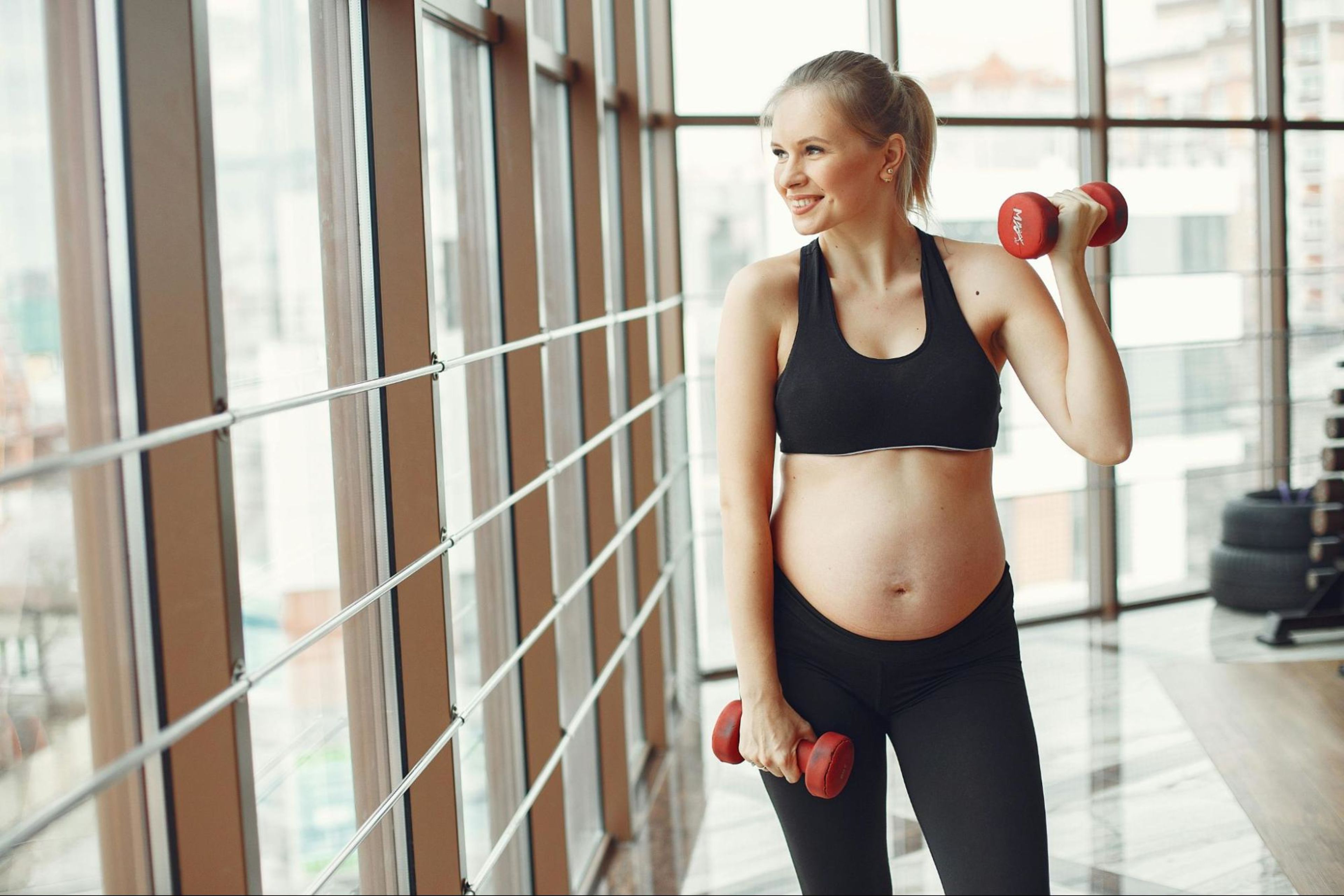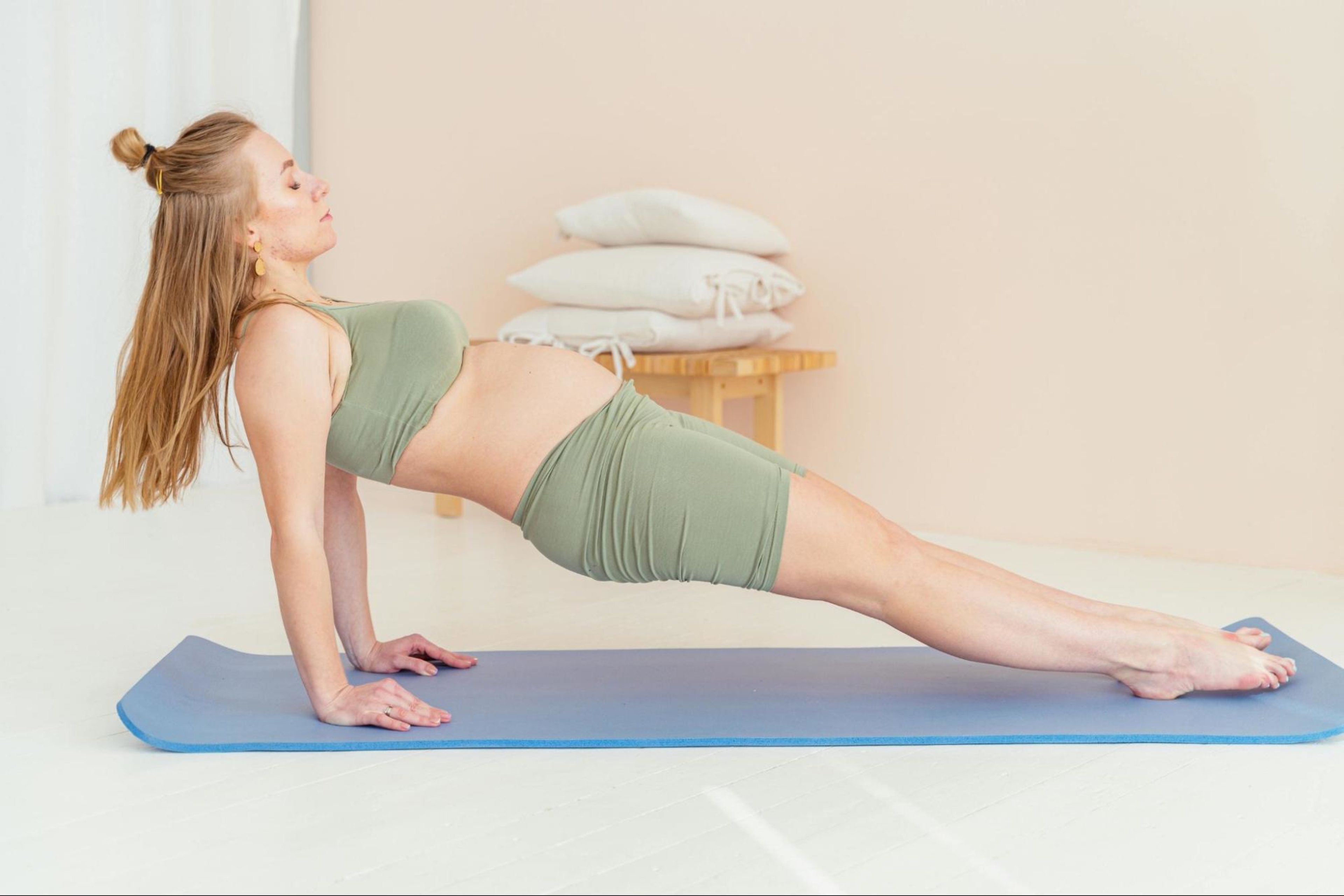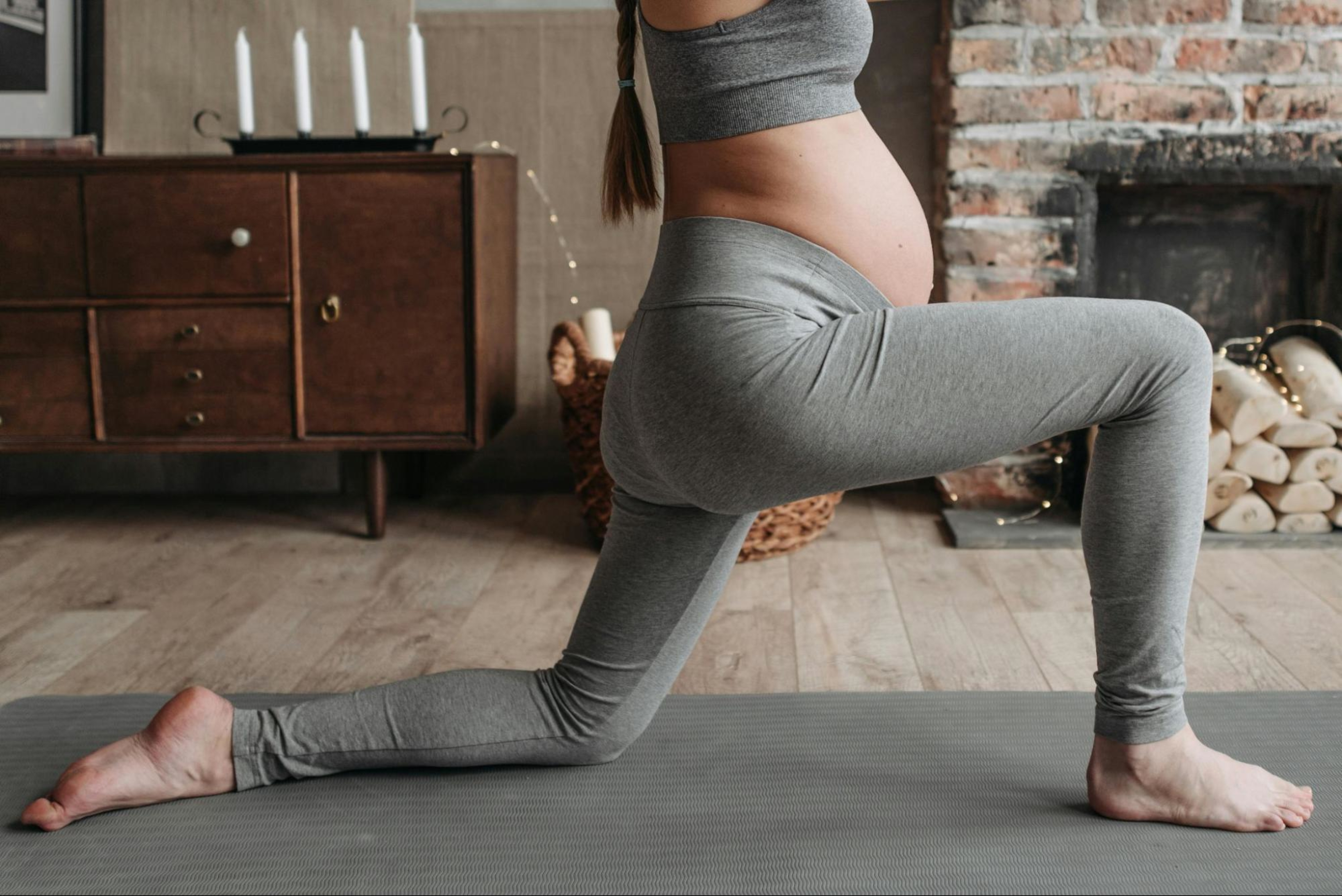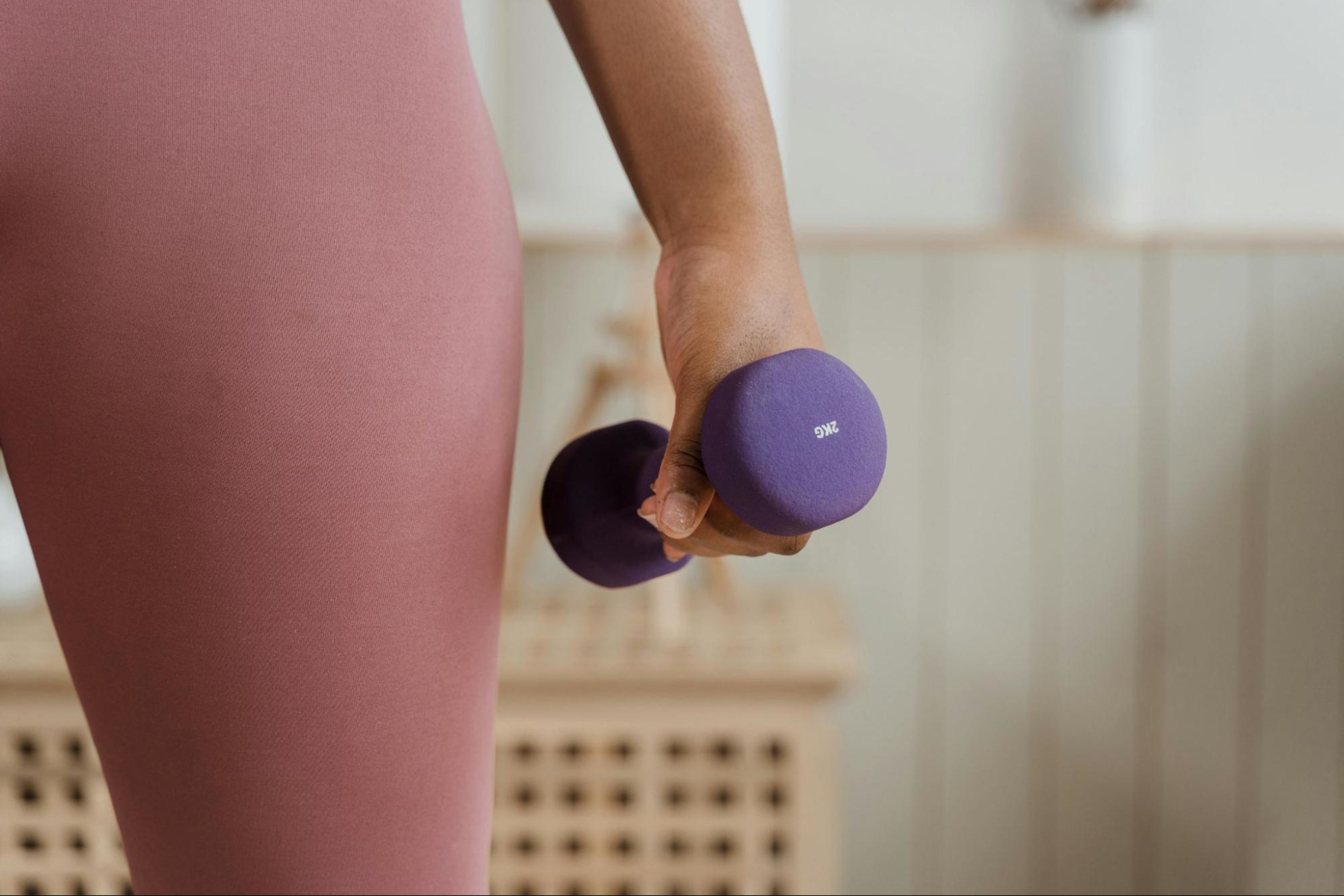Strength Training During Pregnancy: What You Need to Know to Stay Strong and Safe

If you’ve ever wondered whether you should still lift weights now that you’re expecting—or if you’re nervous about what’s “safe”—you’re not alone. Your body is changing daily, and staying active while pregnant can feel both empowering and intimidating.
This guide walks you through everything you need to know about strength training during pregnancy, including safe exercises, training tips, and how to build a thoughtful pregnancy strength training program.
Is strength training safe during pregnancy?
Yes—for most moms, it absolutely can be. Out of an abundance of caution, most health organizations, such as the Office of Disease Prevention and Health Promotion (ODPHP), state it is safe to strength train during pregnancy if you’re healthy, your pregnancy is normal, and you’re already used to regular strength training.
You won’t be risking any complications such as miscarriage, low birth weight, or early delivery just by exercising, according to the American College of Obstetricians and Gynecologists (ACOG).
That said, if you’ve never done strength training before, it’s best to talk to your OB-GYN before starting any new exercise routine.

Did you know?
Over 90% of Hydrow members are still active one year later.
The benefits of strength training during pregnancy
Research backs this up, too: A 2024 review of existing research in the International Journal of Women’s Health zeroed in on the benefits of pregnancy strength training and found they include:
Reduced fatigue
Improved back pain
Better mental health
Healthier blood sugar for people with gestational diabetes
Higher chances of a vaginal delivery
Improved cognitive function and metabolic health of the child
In addition, according to the ACOG, exercise of any kind during pregnancy is also thought to:
Ease constipation
Promote healthy weight gain during pregnancy and weight loss after pregnancy
Improve overall fitness
Safe strength training exercises during pregnancy
With that said, you still want to focus on the right strength training exercises during pregnancy.
Per the International Journal of Women’s Health research, you should avoid strength exercises that:
Involve lying on your back for extended periods of time
Risk trauma to your abdomen
Require a lot of balance
Might increase your body temperature too much
Require sudden, forceful muscle contractions, like plyometrics or ballistic movements
It’s worth repeating, if you’ve been doing strength training regularly, it’s probably safe to continue your usual routine with certain modifications and with the above warnings in mind.
Otherwise, the International Journal of Women’s Health recommends these safe strength training exercises during pregnancy (with the approval of your doctor, of course):
1. Wall sits
Stand with your back against a wall.
Walk your feet about two feet out from the wall and plant them hip-width distance apart. You can point your toes slightly outward if it’s more comfortable for your hips, knees, or growing belly.
Keeping your back against the wall, slowly lower your body down into a squat position until your thighs are parallel to the floor, or as low as you safely go while maintaining good form.
Hold this position for your desired amount of time.
Press through your heels to stand back up and repeat for your desired number of sets.
2. Split squats
Start standing with your feet together. You can hold a dumbbell (or a household item like a water bottle) in each hand for an additional challenge.
Step back with one foot.
Lower into a lunge until your knees form 90-degree angles.
Press through your front foot to lift back up but remain in the split stance. Finish all your repetitions on this side, then switch feet and perform the same amount of reps on the other side.
3. Planks
Prop yourself up on your toes and your forearms, with your elbows right under your shoulders.
Engaging your core and your glutes, hold your body in a straight line from your heels to your hips to your head. Don’t let your hips sag or lift them too high.
Hold this position for your desired amount of time.
Tip: You can also do a full plank by balancing on your toes and your hands, with your palms right under your shoulders. As you get farther along in your pregnancy, you can modify to an incline plank, with your forearms or palms balanced on a couch, bench, or other piece of sturdy furniture or gym equipment.

Efficiency for the win.
Work 86% of your muscles in just 20 minutes of rowing with Hydrow.
4. Step-ups
Stand in front of a staircase at home or an aerobics step or box at the gym.
Move your right foot up onto the step.
Press through your right heel to lift your whole body up and stand fully on the step.
Step your left foot down onto the floor.
Return your right foot to the floor.
Continue for your desired number of reps.
Switch sides and perform the same number of reps stepping up with your left foot first.
5. Triceps dips
Sit on a sturdy chair at home or a bench at the gym with your hands by your hips, fingers hanging over the edge.
Plant your feet in front of you with your knees bent and scoot your glutes off the seat, supporting yourself on your arms.
Bend your elbows behind you to lower your hips toward the floor.
Continue lowering until your upper arms are parallel to the floor.
Press through your arms to lift yourself back up.
Continue for your desired number of reps.
6. Push-ups
Start balancing on your toes and palms in a high plank. Plant your palms directly under your shoulders. Your body should form a straight line from head to hips to heels.
Bend your elbows at 45-degree angles from your torso to lower your chest toward the floor.
When you’re about an inch or two from the ground or as low as you can safely and comfortably go, press through your palms to push your body back up to the starting position.
Continue for your desired number of reps.
Tip: As you get farther along in your pregnancy, you can modify to an incline push-up, with your forearms or palms balanced on a couch, bench, or other piece of sturdy furniture or gym equipment, or a wall push-up, with your palms placed on a wall and your feet planted about two feet away from the wall.
7. Calf raises
Stand near a wall or a sturdy piece of furniture or equipment for balance. Place your palms on the wall at chest or shoulder height.
Keeping your legs straight, slowly lift your heels off the floor so you’re balancing on your toes.
Hold at the top briefly.
Slowly and with control, lower your heels back to the floor.
Repeat for your desired number of reps.
Tip: For more of a challenge, hold a dumbbell in each hand while you do your calf raises. To add more of a stretch, do your calf raises on a stair, and lower your heels below the stair on each rep.

Cardio and strength, combined
Burn calories and build muscle with steady, natural movements.
8. Good mornings
Start standing with your feet hip-distance apart and your hands behind your head.
Hinge at the hips and bend your upper body until it’s about parallel with the ground or as low as you can safely and comfortably go. Make sure your knees stay over your ankles.
Engage your glutes to stand back up.
Repeat for your desired number of reps.
9. Side-lying hip abductions
Lie on your right side with your right leg bent and your left leg out straight.
Keeping your left leg straight, lift it toward the ceiling until your left foot is higher than your left shoulder.
Pause here briefly.
Slowly and with control, lower your left leg back down.
Repeat for your desired number of reps.
Switch sides and perform for the same number of reps lifting your right leg.
Trimester-by-trimester tips for pregnancy strength training
You’ll notice physiological changes throughout your pregnancy that can affect both how you feel doing strength training workouts and the types of exercises that are safe for you and your developing baby.
First trimester: As long as your doctor says it’s OK, you can usually continue whatever strength training you were doing before pregnancy for the first 12 weeks. Lying on your back is still safe during this time, too. Even heavier lifts like barbell squats can be safe now if you’re used to them, according to the National Academy of Sports Medicine (NASM).
Second trimester: Now it’s time to start avoiding strength exercises that require lying flat on your back. You can use incline benches or sturdy chairs for seated movements or even prop yourself up on a pillow in certain positions. If you’re used to doing planks and push-ups, start doing them on an incline to reduce abdominal pressure, per the NASM.
Third trimester: Many people feel they naturally reduce the intensity and/or duration of their strength workouts as they get later in their pregnancy because it’s more uncomfortable and challenging to move with ease. Try your best to stay active in ways that feel comfortable and are safe. Continue to check in with your doctor if any questions come up.
How to structure a pregnancy strength training program
When it comes to actually building a pregnancy strength training program, you’ll want to follow some general guidelines that apply to all healthy, active adults: For starters, aim to do muscle-strengthening exercises at least twice a week, per the ODPHP. And make sure these workouts aren’t on consecutive days. You should aim to have 48 to 72 hours between strength training workouts, according to the NASM.
Pair your strength training with 150 minutes of cardio exercise a week for optimum health, per the ODPHP. Work up to this goal gradually if you’re not already used to cardio workouts. Choose any activity you enjoy, such as swimming, brisk walking, rowing, or dancing.
Always warm up with a few minutes of dynamic exercises before your strength training sessions, and cool down with some static stretching afterward.
And most importantly, listen to your body. If something doesn’t feel right, stop. Talk to your doctor if necessary or try something else instead.
When to modify or pause strength training while pregnant
As mentioned above, when you get past the first trimester, it’s generally time to modify a few movements: Avoid lying on your back for long periods of time and perform certain core exercises on an incline to limit pressure and strain on your abdomen.
Otherwise, there are some red flags to watch for that signal you should stop exercising and contact your doctor, according to the ACOG, such as:
Feeling dizzy or lightheaded
Shortness of breath before starting to work out
Vaginal bleeding or fluid leaking from the vagina
Chest pain
Pain or swelling in your calf muscles
Painful uterine contractions
And at any time during pregnancy, you should avoid the following, per the ACOG:
Contact sports like soccer, basketball, hockey, or boxing, where you risk getting hit in the abdomen, which could endanger the fetus.
Any activities that increase your risk of falling and hurting the fetus, such as skiing, surfing, or horseback riding.
Hot yoga or hot Pilates, which can increase your body temperature too much and become dangerous to the fetus.
Move safely and stay strong with Hydrow
Pregnancy is not about perfection—it’s about presence. Every time you move, you’re reminding yourself how capable your body is. That strength will carry you long past delivery.
If you’re looking for safe, expert-led routines to try, check out Hydrow’s library of strength training workouts, including our prenatal Pilates program! Our experienced Athlete instructors will help you move safely and confidently in any trimester.
Explore Hydrow’s strength workouts today.

Explore Hydrow's library of strength training workouts.










